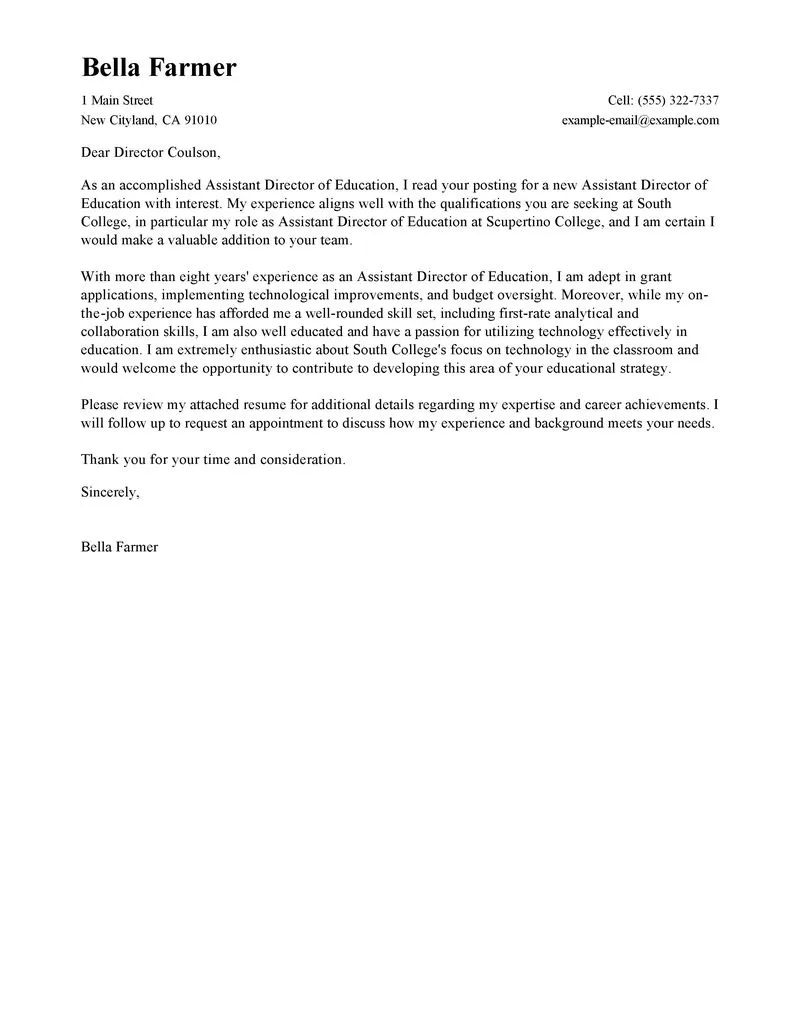Understanding the Importance of a Cover Letter
In the competitive field of education, a well-crafted cover letter can be the key to unlocking your dream job. It’s more than just a formality; it’s your opportunity to introduce yourself, showcase your passion for teaching, and demonstrate how your unique skills and experiences align with the specific needs of the school or institution. A cover letter allows you to go beyond the information presented in your resume, providing context, personality, and a compelling narrative that can capture the attention of hiring managers. It allows you to personalize your application and make a strong first impression, setting you apart from other candidates. This guide will equip you with the knowledge and tools necessary to write a cover letter that will make you stand out.
Why a Cover Letter Matters in Education
Why is a cover letter so critical for education professionals? The answer lies in the nuanced nature of the profession. Educators are not just filling a role; they are shaping young minds and contributing to the future. A cover letter enables you to articulate your educational philosophy, your commitment to student success, and your understanding of the school’s values. It provides a platform to explain any career transitions, gaps in employment, or unique experiences that might not be immediately apparent from your resume. For example, if you’ve volunteered in a community program or mentored students outside of the classroom, the cover letter is the perfect place to highlight these contributions. It allows the hiring committee to understand your personality and your passion for working with young people, creating a more holistic view of who you are beyond your qualifications.
Key Elements of a Compelling Cover Letter for Educators
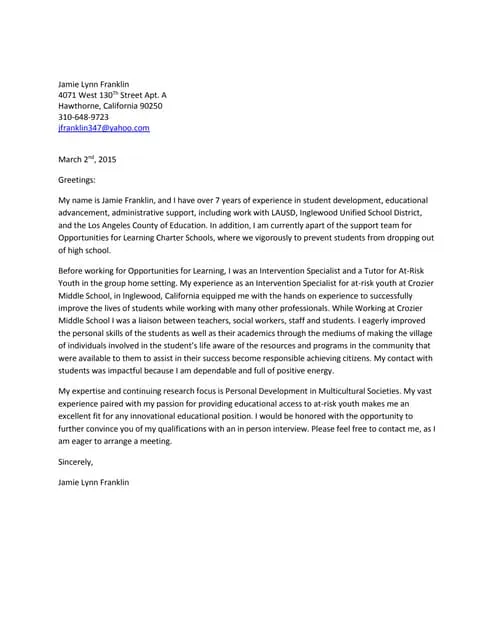
A strong cover letter comprises several essential elements, each playing a crucial role in making a positive impression. From the header to the closing, every detail should be carefully considered and crafted to reflect your professionalism and enthusiasm. We will explore each element in detail, offering specific guidance for educators to create a cover letter that effectively communicates their value and unique qualifications. Proper formatting and attention to detail are just as important as the content, ensuring that your letter is easy to read and reflects your attention to detail—a quality highly valued in education. Each element is a building block toward a compelling narrative that showcases your suitability for the role and the school.
Header Information
Begin your cover letter with a professional header. This section includes your contact information, the date, and the employer’s contact information. Ensure the header is clean, organized, and easy to read. This sets the tone for professionalism from the start. Your contact information should include your full name, phone number, email address, and optionally, your LinkedIn profile URL. The date should be the date you are sending the letter. Below that, include the hiring manager’s name (if known), their title, the school’s name, and the school’s address. This indicates that you have paid attention to detail and allows for a more personalized approach, showing you’ve done your research. Always double-check all details for accuracy.
Your Contact Information
Place your contact information at the top left or right of the header. This usually includes your name, address, phone number, and email. Use a professional email address (e.g., jane.doe@email.com) rather than a casual one. Make sure your phone number is current and that your voicemail greeting is professional. This initial information ensures that the employer can easily contact you if they are interested in scheduling an interview. Proper contact details show you are organized and serious about the opportunity. Ensure everything is correct; a simple error here could mean the employer cannot reach you.
Date
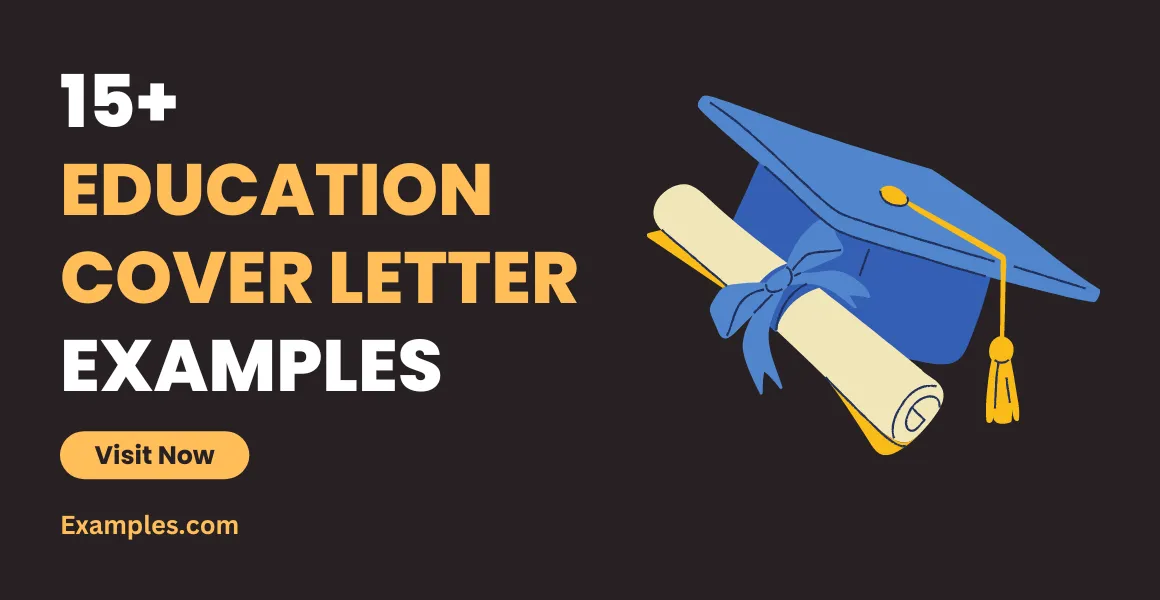
Below your contact information, include the current date. This helps the employer understand when the letter was written and submitted. Formatting should be consistent with the other elements of your header, and it should be easy to distinguish. The date is a simple detail, but it’s important to get it right, especially in a professional context like a job application. It shows your commitment to precision and your attention to detail. This helps with organization, especially if the hiring manager reviews multiple applications. Keep the date format simple and straightforward to ensure readability and professionalism.
Employer’s Contact Information
If possible, address your cover letter to a specific person, such as the hiring manager or the principal. If you can’t find a specific name, use a title, such as ‘Hiring Committee’ or ‘Human Resources Department.’ Knowing the recipient shows you have taken the time to research the school and the position. If a name is available, use it; this adds a personal touch and shows genuine interest. Researching the school’s website or calling the school’s office can often provide you with the necessary contact details. Addressing the letter directly demonstrates your commitment to the application process and helps make a good first impression.
Salutation
Use a professional salutation. ‘Dear Mr./Ms./Mx. [Last Name]’ is the standard format if you know the hiring manager’s name. If you don’t know the name, ‘Dear Hiring Committee’ or ‘Dear [School Name] Hiring Team’ are good alternatives. Avoid generic salutations like ‘To Whom It May Concern,’ which can make your letter seem impersonal. A personalized salutation shows respect and attention to detail. Always double-check the spelling of the recipient’s name, as a simple misspelling can be a significant error. The correct salutation sets the tone for a professional and respectful interaction.
Crafting a Strong Opening Paragraph
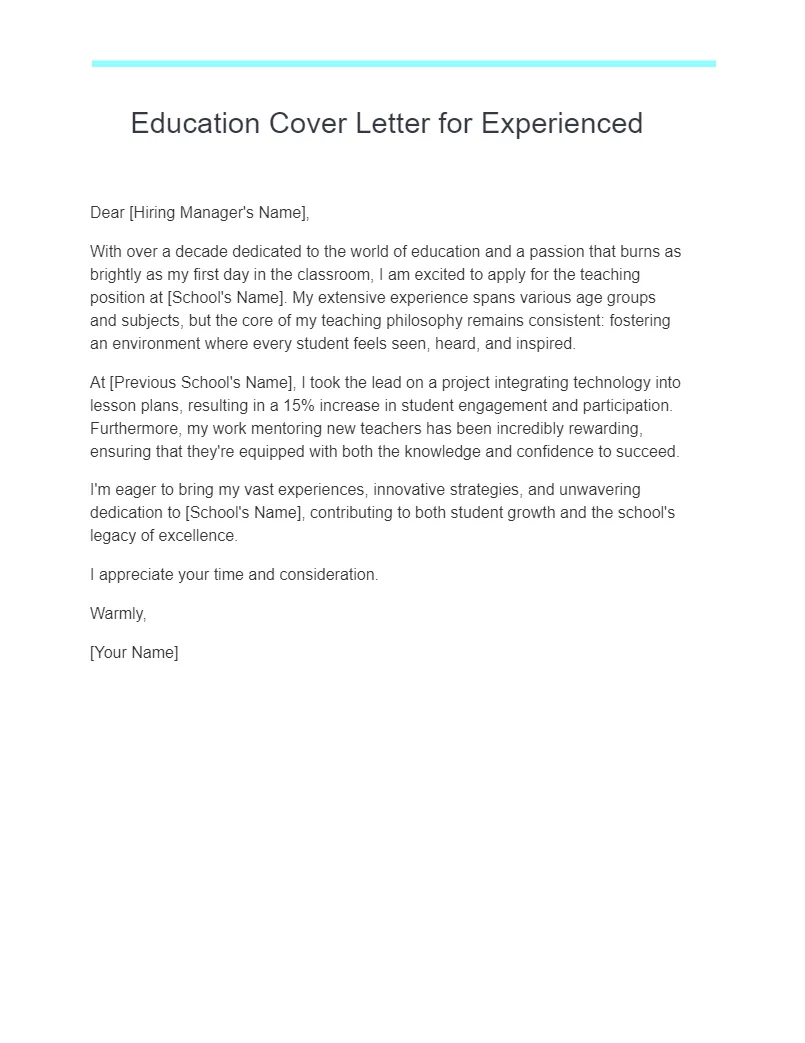
Your opening paragraph is your first opportunity to make a strong impression. Clearly state the position you are applying for and how you learned about the opportunity. Briefly highlight your key qualifications or skills that align with the job requirements. Make sure it grabs the reader’s attention and encourages them to continue reading. This is where you make your initial connection. Mentioning a specific achievement or a shared value with the school can be highly effective. Avoid generic opening lines; instead, be concise and enthusiastic. Your goal is to show why you are the ideal candidate, and this is where you begin to plant that seed.
Highlighting Your Qualifications and Experience
The body of your cover letter should provide specific examples that support your qualifications and experiences. Connect your skills and experiences to the specific requirements outlined in the job description. Use keywords from the job posting to show you understand the role and its needs. Describe your accomplishments using the STAR method (Situation, Task, Action, Result) to provide clear, concise examples. Consider the needs of the school and emphasize experiences that showcase your ability to meet them. Use concrete examples to show your capabilities. It is not enough to say you are a good teacher; you need to show it through examples of student success, innovative teaching strategies, or collaborative projects.
Showcasing Your Skills
In your cover letter, it’s essential to showcase your skills, both hard and soft. Highlight skills relevant to teaching, such as lesson planning, classroom management, curriculum development, and assessment. Include soft skills like communication, collaboration, adaptability, and problem-solving. Provide examples of how you have effectively used these skills in previous roles. For instance, describe how you adapted your teaching methods to meet the diverse needs of your students. Demonstrating a combination of hard and soft skills is crucial. Your ability to manage a classroom and collaborate with colleagues is as important as your knowledge of the subject matter. Refer back to the job description and tailor your showcased skills to match.
Quantifying Achievements
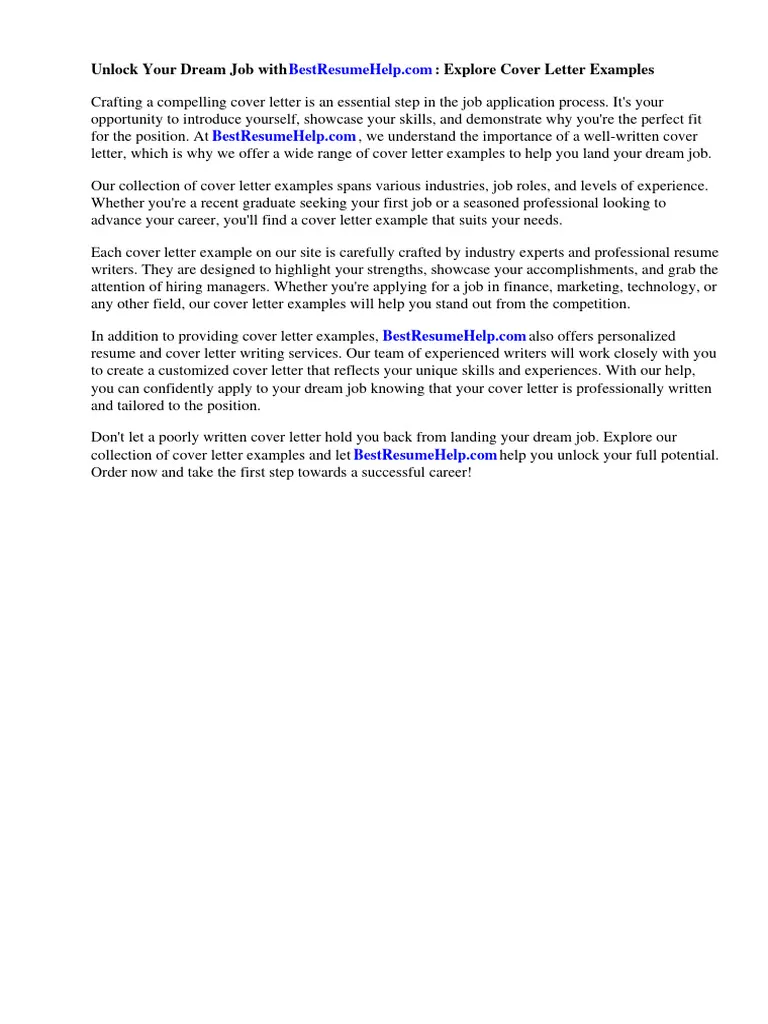
Whenever possible, quantify your achievements. Instead of saying ‘Improved student test scores,’ say ‘Increased student test scores by 15% in one year.’ Use numbers, data, and specific metrics to demonstrate the impact of your work. Quantifying your achievements adds credibility and shows tangible results. This can include student performance data, improvements in classroom management, or successful implementation of new programs. Quantifiable data supports your claims and offers concrete evidence of your capabilities. Using data makes it easier for the hiring manager to assess your accomplishments, providing a clearer picture of your value.
Tailoring Your Letter to the Specific Role
Customize your cover letter for each application. Don’t use a generic letter; adapt it to the specific job requirements and the school’s values. Research the school’s mission, vision, and values and address how you align with them. Review the job description carefully and tailor your letter to the key skills and experiences the school is seeking. Mention specific aspects of the role or school that excite you. Showing that you understand the school’s needs will make your application stand out. Tailoring your letter shows you’re invested in the position and have taken the time to learn more about the opportunity. It is a critical step toward securing the job.
Researching the School or Institution
Research the school or institution to gain insight into its culture, values, and needs. Visit their website, read their mission statement, and explore any recent news or events. This research will help you tailor your cover letter and demonstrate your genuine interest in the school. Use this information to address specific aspects of the school that resonate with you. This might include their focus on student well-being, their commitment to community engagement, or their innovative teaching approaches. Demonstrating that you share their values will make a strong impression. Research also enables you to address the school’s specific needs, which can be pivotal in your application.
Addressing Specific Requirements
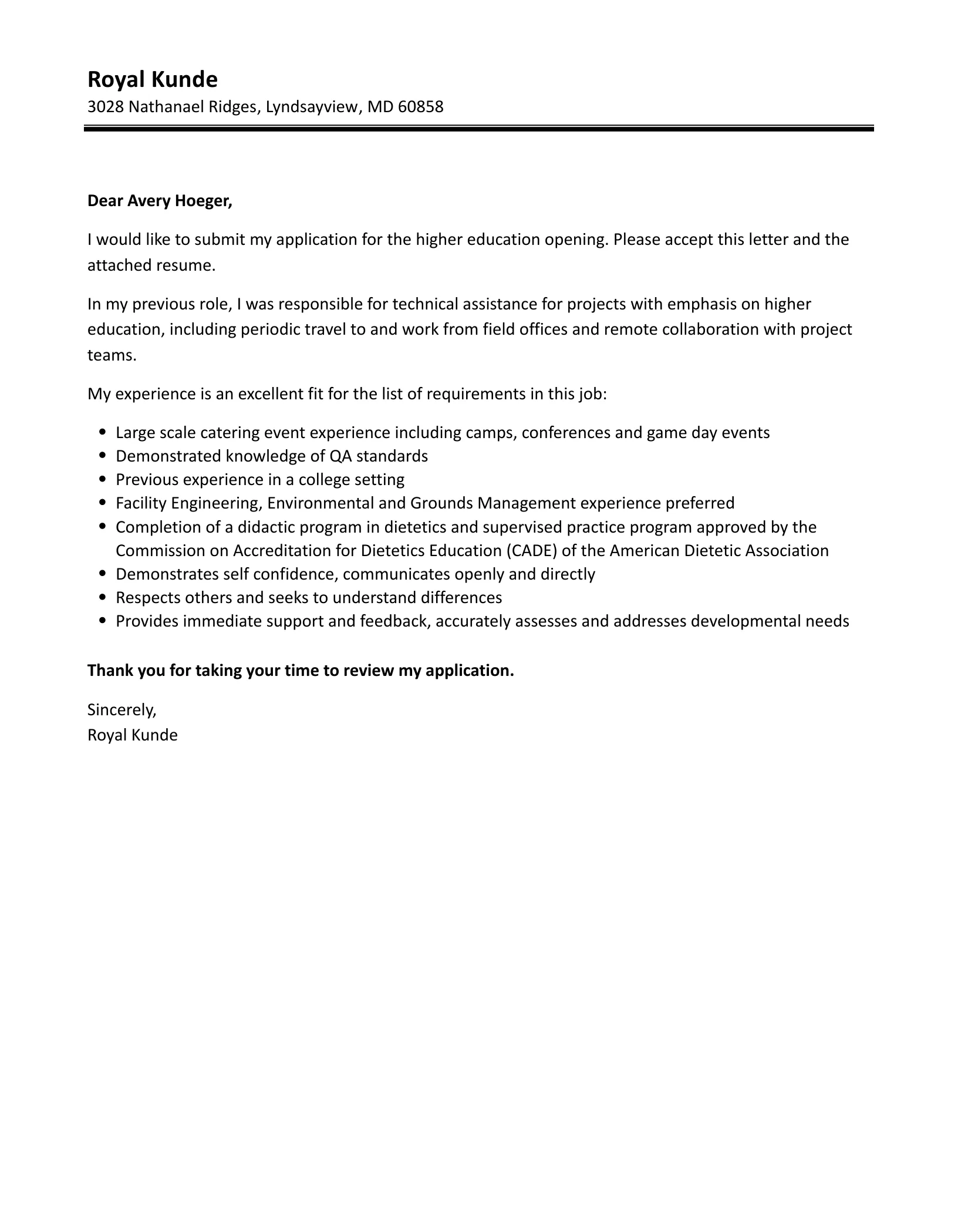
Carefully review the job description and address each of the required qualifications and skills. Use the job description as a guide to ensure you cover all the key areas the school is looking for in a candidate. Use the same keywords and phrases from the job description in your cover letter to demonstrate that you meet the specified requirements. Provide concrete examples of how you meet each requirement, such as through your teaching experience, certifications, or other relevant experiences. This approach demonstrates your attention to detail and a clear understanding of the role. Ensure you have completely addressed all specific requirements. Ignoring them could lead to your application being overlooked.
Writing a Powerful Closing Paragraph
Your closing paragraph is your final opportunity to leave a lasting impression. Reiterate your interest in the position and summarize why you are a strong fit. Express your enthusiasm for the opportunity and reiterate your commitment to contributing to the school’s mission. Keep it concise and action-oriented, making it clear what you want the hiring manager to do next. A well-written closing can be the final push that convinces the hiring manager to contact you. A compelling close leaves the reader feeling enthusiastic about your candidacy. Your closing should reinforce your key message and express a clear call to action.
Expressing Enthusiasm
Express your enthusiasm for the position and the school. Let your passion for education shine through. Use positive and energetic language to convey your excitement. Show genuine interest in the opportunity, making it clear why you are the perfect fit. Hiring managers want to see your passion. Sharing your enthusiasm can make a difference when compared to other applicants. Your enthusiasm creates a connection and leaves a memorable impression. When combined with the skills and accomplishments, it can give you an edge.
Call to Action
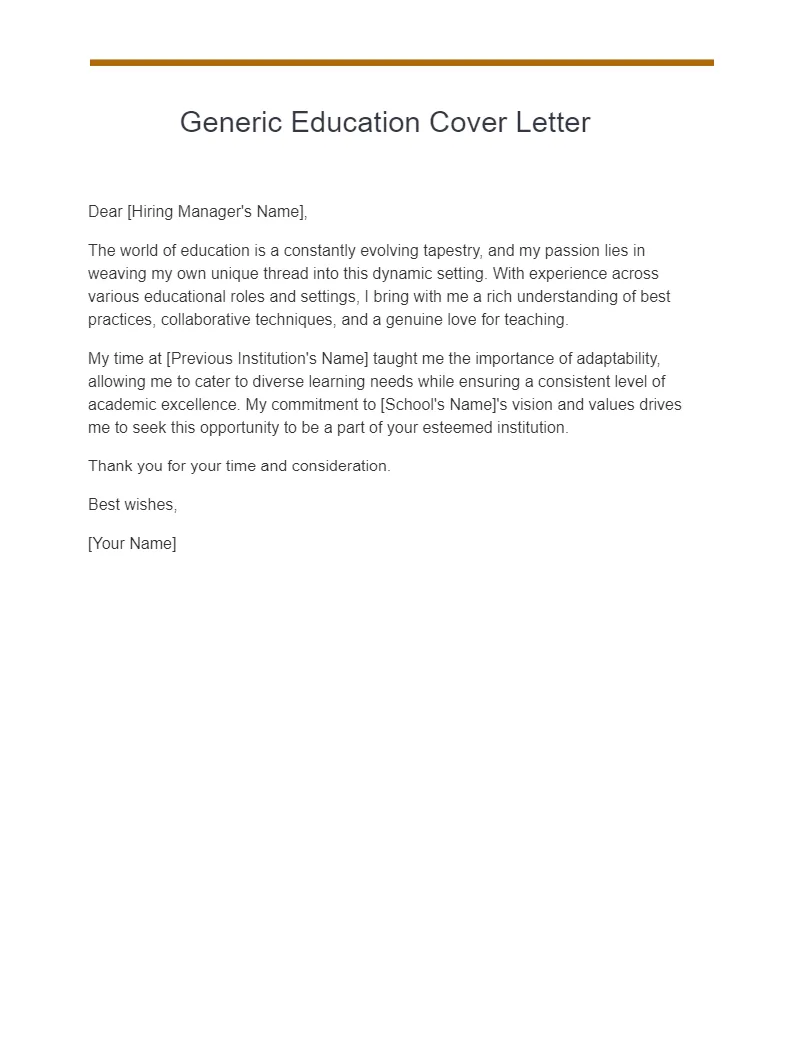
End with a clear call to action. Request an interview and provide your contact information, if you haven’t already. Make it easy for the hiring manager to contact you by including your phone number and email address. State your availability for an interview and express your willingness to provide additional information. A clear call to action demonstrates your proactive approach and commitment to the application process. Ensure you are making it easy for the hiring manager to move forward with your application. Include an invitation to contact you at their convenience.
Proofreading and Formatting Your Cover Letter
Proofreading and formatting are critical for ensuring your cover letter is professional and error-free. Take the time to carefully review your letter for any grammatical errors, spelling mistakes, or formatting inconsistencies. Ensure your cover letter is visually appealing and easy to read. A well-formatted letter reflects your attention to detail and professionalism. Errors can undermine your credibility, so taking the time to proofread is crucial. Carefully formatting your document makes it easy for the hiring manager to read and understand your letter. This shows you take pride in your work.
Checking for Errors
Carefully proofread your cover letter multiple times. Check for spelling errors, grammatical errors, and punctuation mistakes. Use a spell checker, but also read the letter aloud to catch any missed errors. Ask a friend or colleague to review your letter for a fresh perspective. Consider running your letter through a grammar checker. Pay attention to details, like capitalization, punctuation, and sentence structure. This ensures your cover letter is polished and professional. Proofreading helps you avoid making errors, ensuring that your achievements are clearly presented.
Formatting Tips
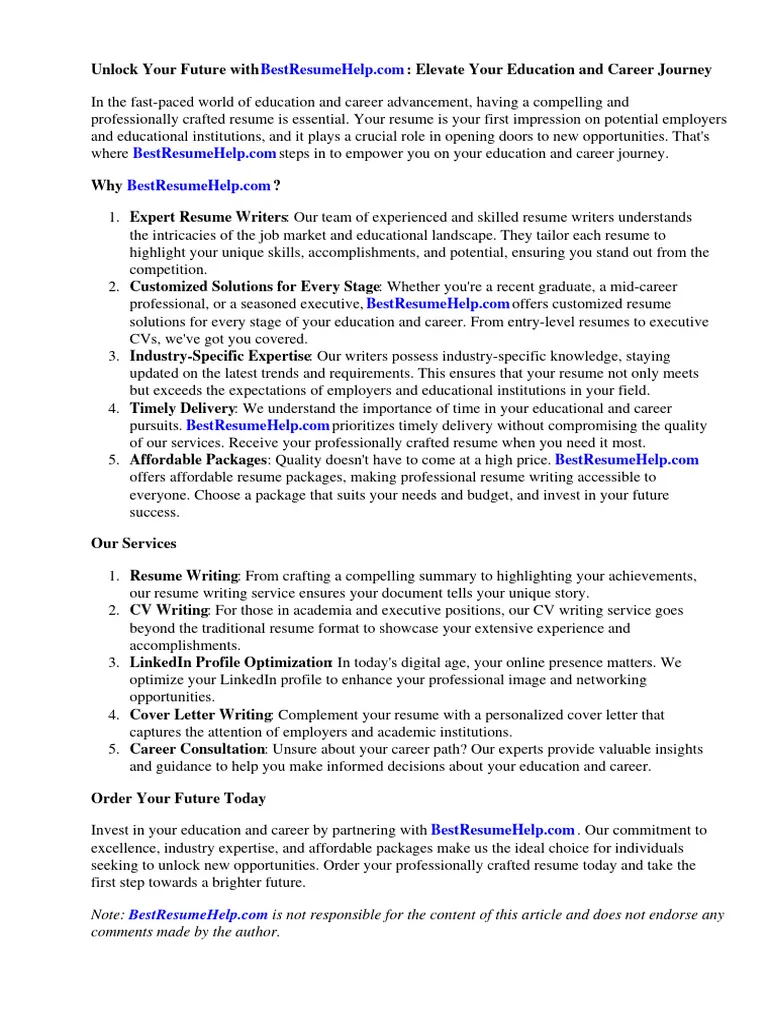
Use a professional and easy-to-read font, such as Times New Roman, Arial, or Calibri, and set the font size to 11 or 12 points. Use consistent spacing and margins throughout your letter. Keep your letter concise, typically one page long. Use bullet points or numbered lists to highlight key achievements or skills. Break up large blocks of text with paragraphs. Maintain a clean and organized layout. Proper formatting makes your letter easier to read, allowing the reader to quickly grasp the information. Professional formatting reflects attention to detail. Ensure the spacing and margins are consistent throughout, contributing to a polished look.
Cover Letter Examples for Different Education Roles
Reviewing examples of cover letters for different education roles can help you understand how to tailor your letter to specific positions. Use these examples as a guide to tailor your letter to the specific role and the school’s needs. The examples provide frameworks for showcasing your skills and experiences effectively. These are models to help you get started, providing inspiration and structure to make your cover letter stand out. Look at examples for a variety of roles like teacher, principal, and other administrative or support roles.
Teacher Cover Letter Example
A teacher cover letter should highlight your teaching experience, your ability to create a positive classroom environment, and your passion for student success. Showcase your teaching methodologies, classroom management skills, and experience with curriculum development. Demonstrate your ability to differentiate instruction, assess student progress, and foster a love of learning. Tailor the letter to the specific grade level and subject area. Include specific examples of how you have improved student outcomes and supported student growth. Highlight professional development and any certifications. Quantify your achievements where possible, showing how you have impacted student success.
Principal Cover Letter Example
A principal cover letter should showcase your leadership skills, experience in school administration, and commitment to creating a positive school culture. Highlight your experience in school management, teacher supervision, and community engagement. Demonstrate your ability to create and implement effective school policies and initiatives. Showcase your understanding of curriculum development, student assessment, and school finances. Emphasize your ability to foster collaboration among staff, students, and parents. Include specific examples of your leadership achievements, such as improving student performance, enhancing school climate, or increasing parent involvement. Focus on your strategic planning abilities and your vision for the school’s future.
Tips for Submitting Your Cover Letter
When submitting your cover letter, carefully follow the instructions provided by the school or institution. Ensure that you are submitting the correct file format (e.g., PDF). Double-check all the details. Always make sure your cover letter is attached correctly. Always confirm that your letter and resume have been successfully submitted before closing the application process. Following these steps will increase the chance of your application being reviewed by the hiring team. Your goal is to ensure your application is complete and compliant with all the given instructions.
